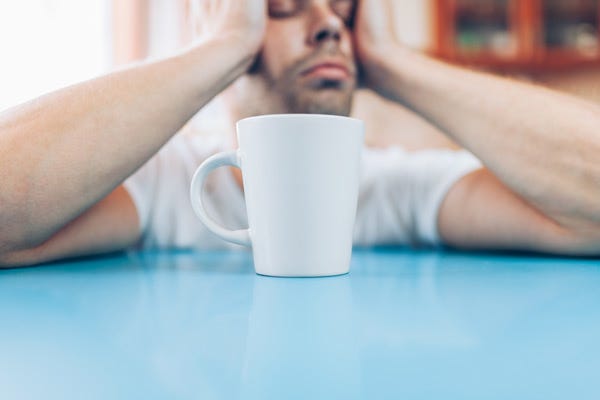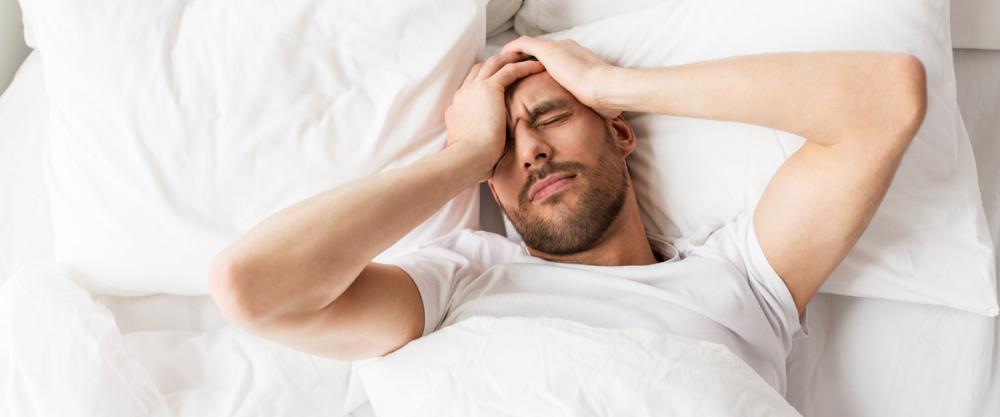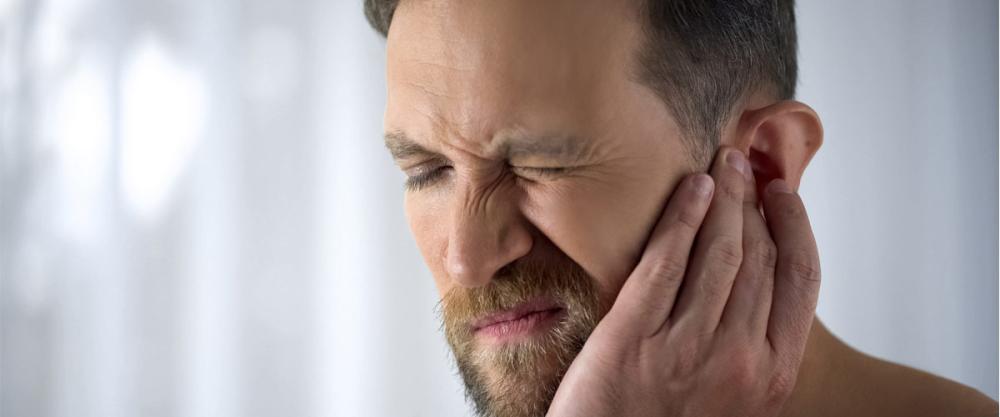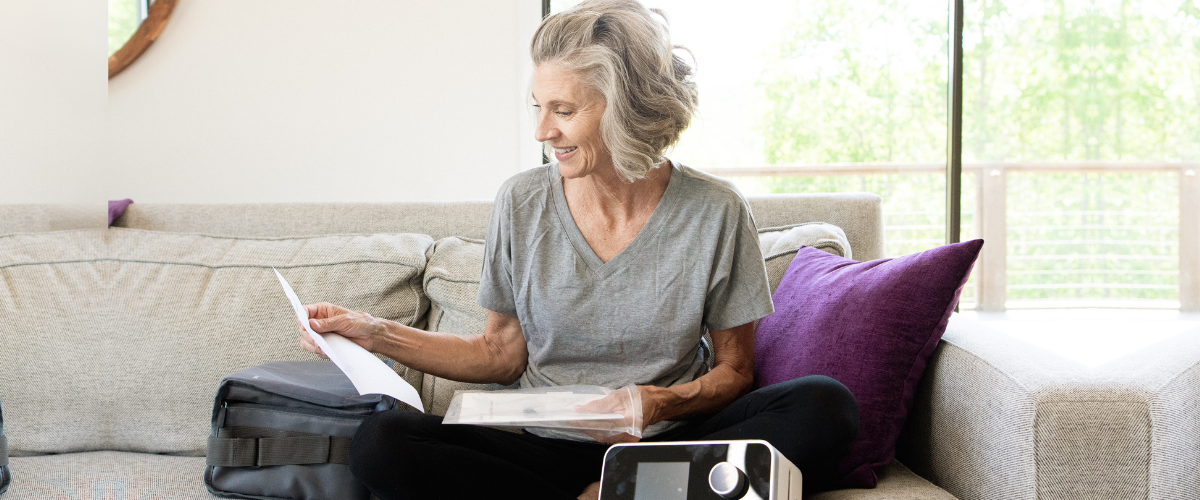Sleep apnea is a common sleep disorder that can cause loud snoring at night and a wide range of daytime symptoms. Although sleep apnea is common, it is a serious condition. If it is left untreated, sleep apnea can lead to cardiovascular trouble, hypertension, and other complications.
Types of Sleep Apnea
There are two main types of sleep apnea:
Obstructive sleep apnea (OSA) — OSA occurs when your upper airway becomes fully or partially blocked in your sleep. It takes hard muscle contractions from your chest and diaphragm to reopen your airway. This can interrupt your sleep, cause heart rhythm abnormalities, and reduce the supply of oxygen to organs and tissue.
Central sleep apnea — Central sleep apnea is caused by a problem with the central nervous system. This condition occurs when your brain doesn’t tell your muscles to breathe.
Obstructive sleep apnea is significantly more common than central sleep apnea.
Warning Signs
- Loud snoring
- Waking up snorting or gasping for air
- Someone else observing that you have breathing pauses while you sleep
- Waking up with a dry mouth
- Frequent morning headaches
- Excessive daytime sleepiness
- Insomnia
- Irritability


There are multiple signs you might have sleep apnea, and these go beyond just snoring. These signs can indicate OSA or central sleep apnea and include:
What Causes Sleep Apnea?
Obstructive sleep apnea occurs when you repeatedly and briefly stop breathing during the night. OSA is caused by an over-relaxation of the muscles in the back of the throat. The muscles at the back of your throat support structures such as your tongue, soft palate, tonsils, and the walls of your throat. When these muscles relax, your airway can narrow or close completely. This reduces the amount of air your body gets when you inhale. Your brain then registers that you’re not breathing and briefly wakes you up so that your throat muscles can reopen. This cycle can repeat all night and make it impossible for you to get a truly restful night’s sleep.
Central sleep apnea is caused by a disconnect in communication between your brain and your airway muscles. It is often the result of health conditions such as stroke, heart disease, and kidney failure. It can also be caused by opioids and other medications.
Risk Factors
Anyone can develop sleep apnea, but there are risk factors that make the condition more likely. For instance, older men are at an increased risk for sleep apnea. Additional factors include:
- Obesity
- Smoking
- A large neck circumference
- A narrow throat
- Enlarged tonsils or adenoids
- A family history of sleep apnea
- Having been through menopause
- Using sedative medications
- Drinking alcohol
- Chronic nasal congestion
- Chronic medical conditions including type 2 diabetes, congestive heart failure, and high blood pressure
What to Do When You Suspect Sleep Apnea
A medical appointment is the first step toward getting the treatment you need for sleep apnea. A healthcare provider can go over your symptoms and medical history and then order tests to confirm a diagnosis of sleep apnea. You might be referred to a sleep center for an appointment with a sleep specialist.
Often, having sleep apnea diagnosed involves staying overnight in the sleep center for a sleep study and test called polysomnogram During the test, you’ll be hooked up to equipment that monitors your heart rate, brain activity, blood oxygen levels, and arm and leg movements while you sleep. If you can’t stay overnight at a sleep center, home sleep apnea tests might be an option. These tests measure your airflow, breathing patterns, blood oxygen levels, and heart rate while you sleep.
Treating Sleep Apnea
Your treatment plan for sleep apnea will depend on the cause, type, and on your symptoms. Lifestyle changes, such as smoking cessation and weight loss, are typically a key part of the plan. Treatment options include:
- PAP therapy — PAP stands for positive airway pressure, and this type of therapy includes CPAP (continuous positive airway pressure), APAP (Automatic Positive Airway Pressure), and BiPAP (Bilevel Positive Airway Pressure). A PAP machine delivers pressurized air via a mask that you wear during sleep. This pressurized air acts like a splint, preventing your airways from collapsing.
- Oral appliances — Oral appliances are available from a dentist. They help keep your jaw in optimal position overnight and make it easier to breathe.
- Supplemental oxygen — Sometimes, using supplemental oxygen at night can help increase blood oxygen levels. This treatment is typically used for central sleep apnea.
- Surgery — If other treatments haven’t been successful, surgery might be an option for people with obstructive sleep apnea. There are multiple surgical options available that can keep your airways open, including tissue removal procedures and jaw repositioning.
References
Mayo Foundation for Medical Education and Research. (2021, July 27). Obstructive sleep apnea. Mayo Clinic. Retrieved October 7, 2022, from https://www.mayoclinic.org/diseases-conditions/obstructive-sleep-apnea/symptoms-causes/syc-20352090
Ratini, M. (2022, January 15). Central sleep apnea: Causes, symptoms, and treatments. WebMD. Retrieved October 7, 2022, from https://www.webmd.com/sleep-disorders/sleep-apnea/central-sleep-apnea
Is it more than a snore? recognizing sleep apnea warning signs - AASM. American Academy of Sleep Medicine – Association for Sleep Clinicians and Researchers. (2021, June 22). Retrieved October 7, 2022, from https://aasm.org/is-it-more-than-a-snore-recognizing-sleep-apnea-warning-signs/
U.S. Department of Health and Human Services. (n.d.). What is sleep apnea? National Heart Lung and Blood Institute. Retrieved October 7, 2022, from https://www.nhlbi.nih.gov/health/sleep-apnea






